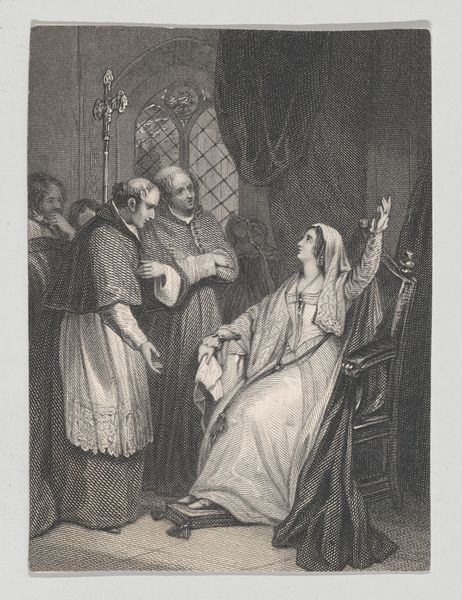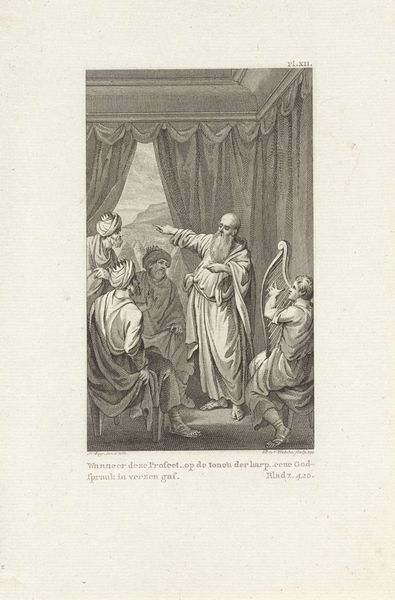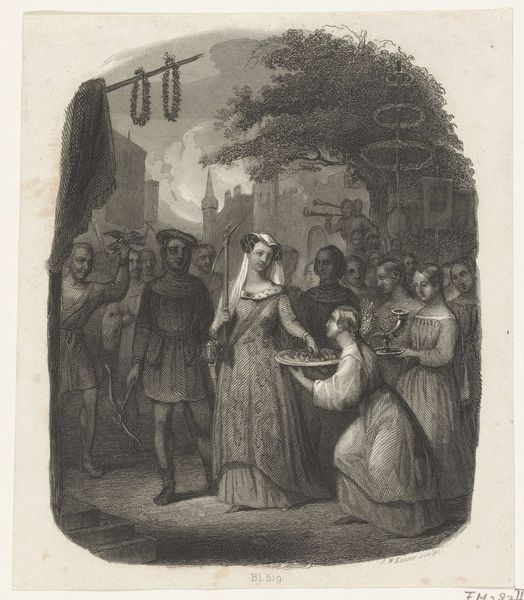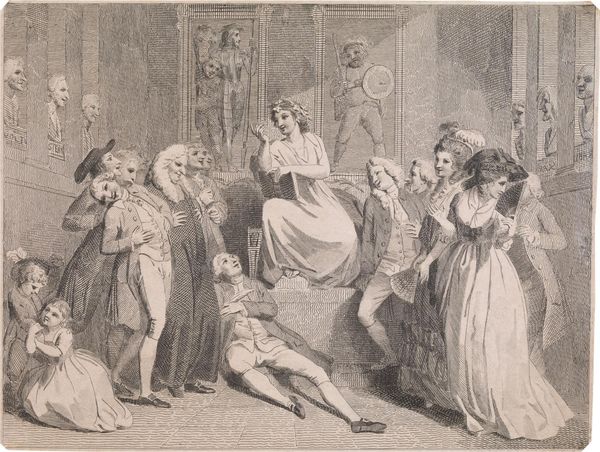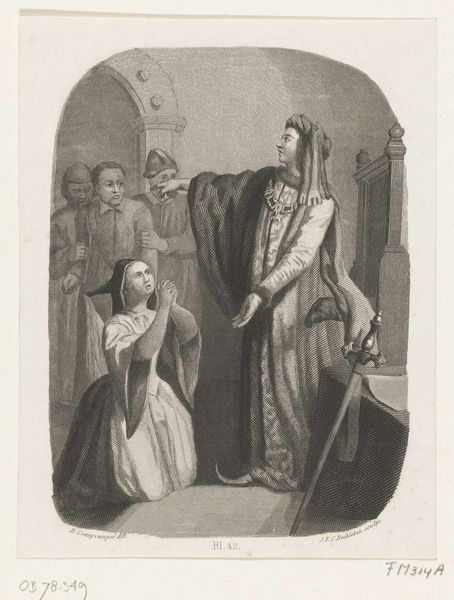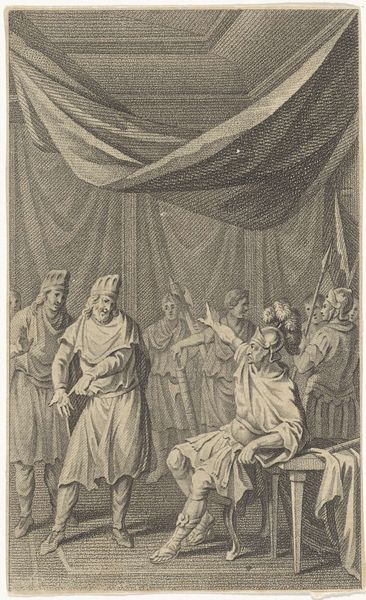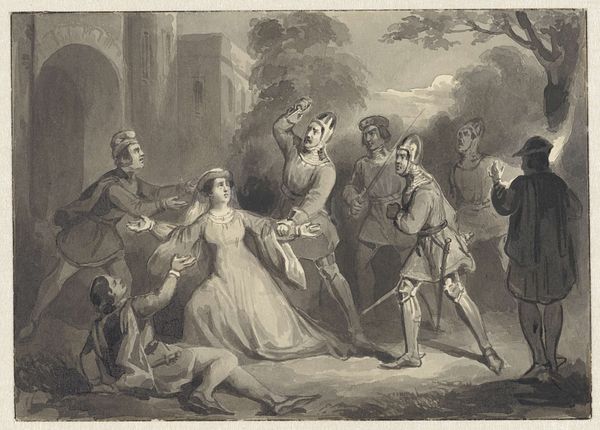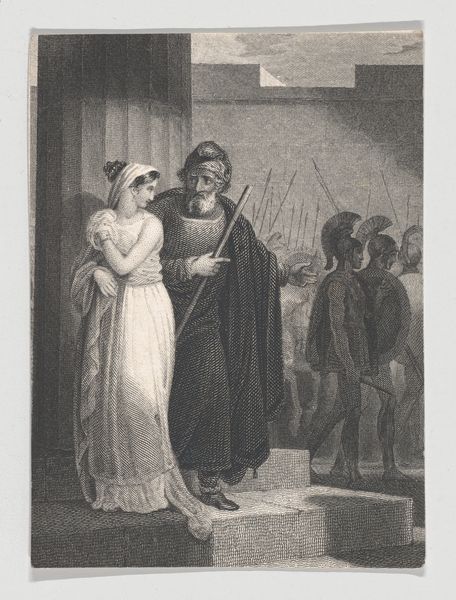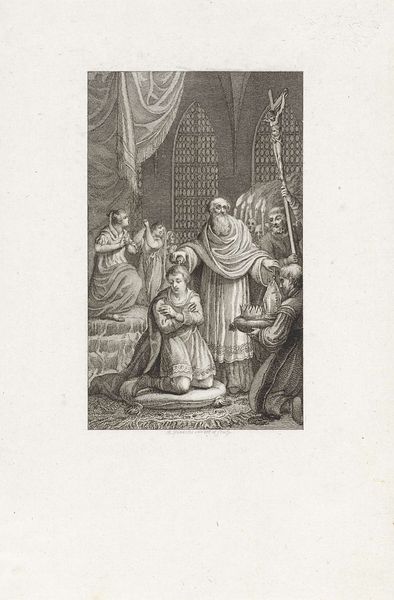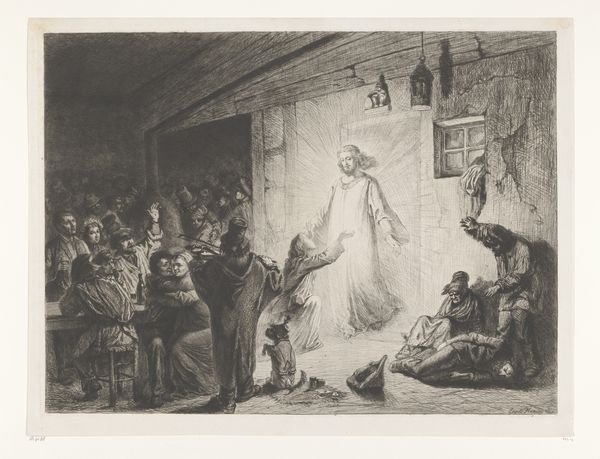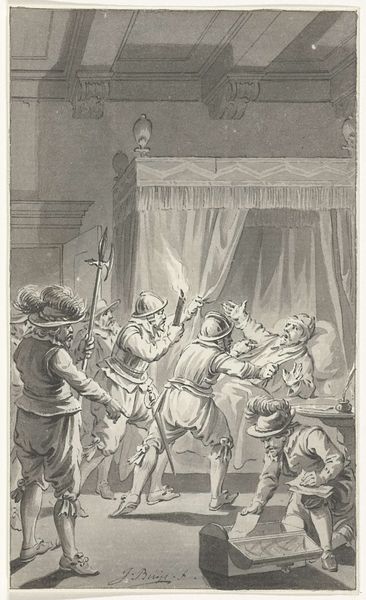
Dimensions: height 196 mm, width 283 mm
Copyright: Rijks Museum: Open Domain
Editor: Here we have Jan Baptist Tetar van Elven’s engraving, “Louis IX during a Crusade,” created sometime between 1815 and 1889. The drama really jumps out – that figure kneeling in supplication! What strikes you about it? Curator: It's interesting to consider this engraving within the context of 19th-century Romanticism. This period saw a surge in interest in medieval themes, often tinged with nationalist sentiment. The choice of engraving, a readily reproducible medium, speaks volumes about the intended audience and the accessibility of the narrative. How do you see the material itself – the printed image – contributing to the message? Editor: Well, because it’s a print, the image could be distributed more easily, bringing this vision of history to a wider audience than, say, an oil painting could. It feels like propaganda, almost? Curator: Precisely. Consider the means of production – the skilled labor of the engraver, the paper and ink, the printing press itself. These are all material elements that contribute to the dissemination of a particular version of history. And who consumes these images? What were their desires and expectations regarding the medieval past? These questions shift our focus from simply aesthetic appreciation to the social and economic context surrounding the artwork. Are there specific details that emphasize particular cultural power dynamics? Editor: I’m now noticing how much sharper the details of the crusaders are than the figures behind them and outside. They also have the shiniest armor which draws your eye. Curator: Indeed. Examining how light is manipulated becomes interesting here. Thank you for reminding me to consider it! Editor: Seeing the art in relation to social themes changes my perspective on this print, for sure. Curator: Exactly! By understanding production methods and cultural factors we recognize the active agency that the materials have to define a historical narrative.
Comments
No comments
Be the first to comment and join the conversation on the ultimate creative platform.
